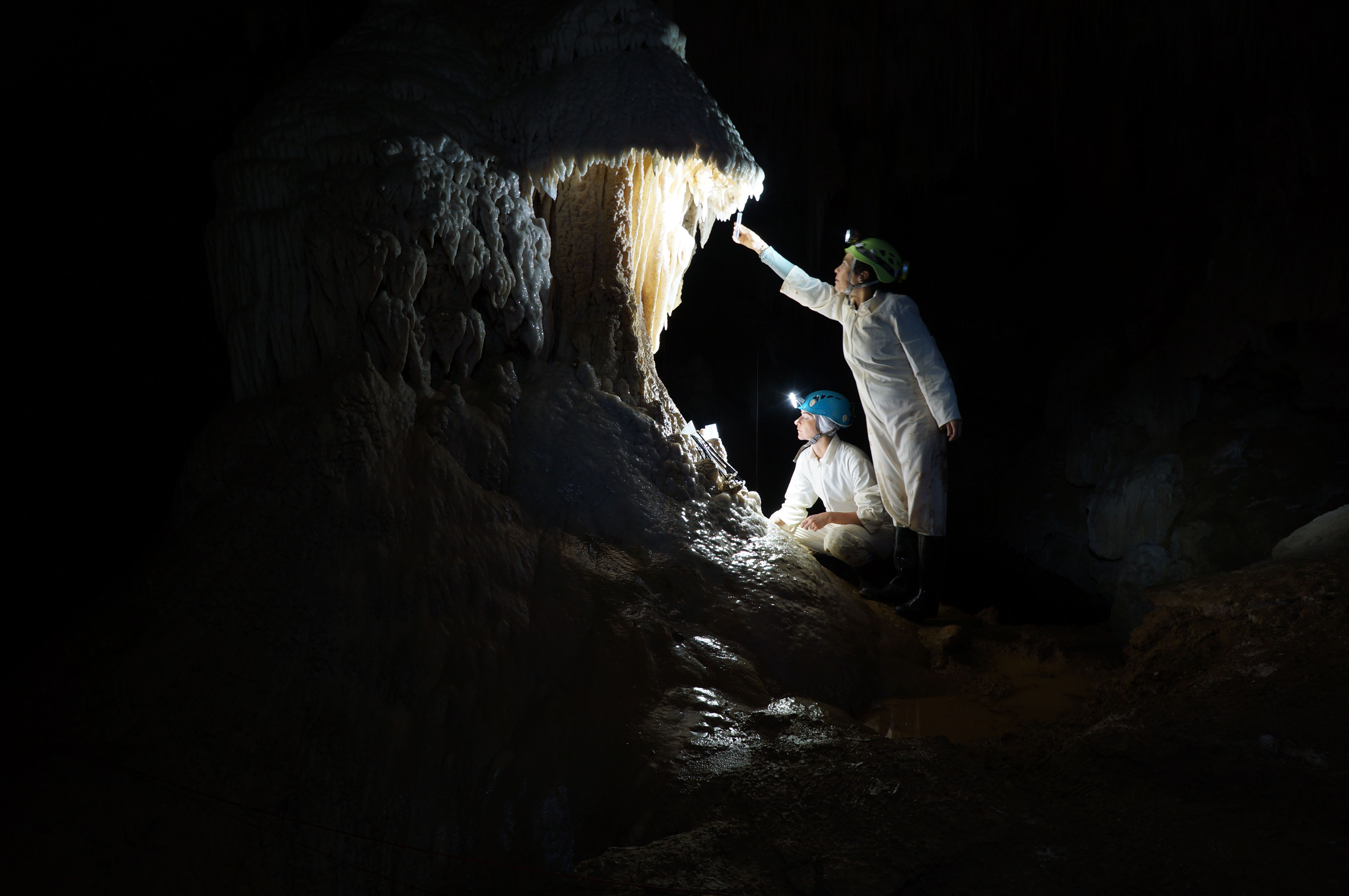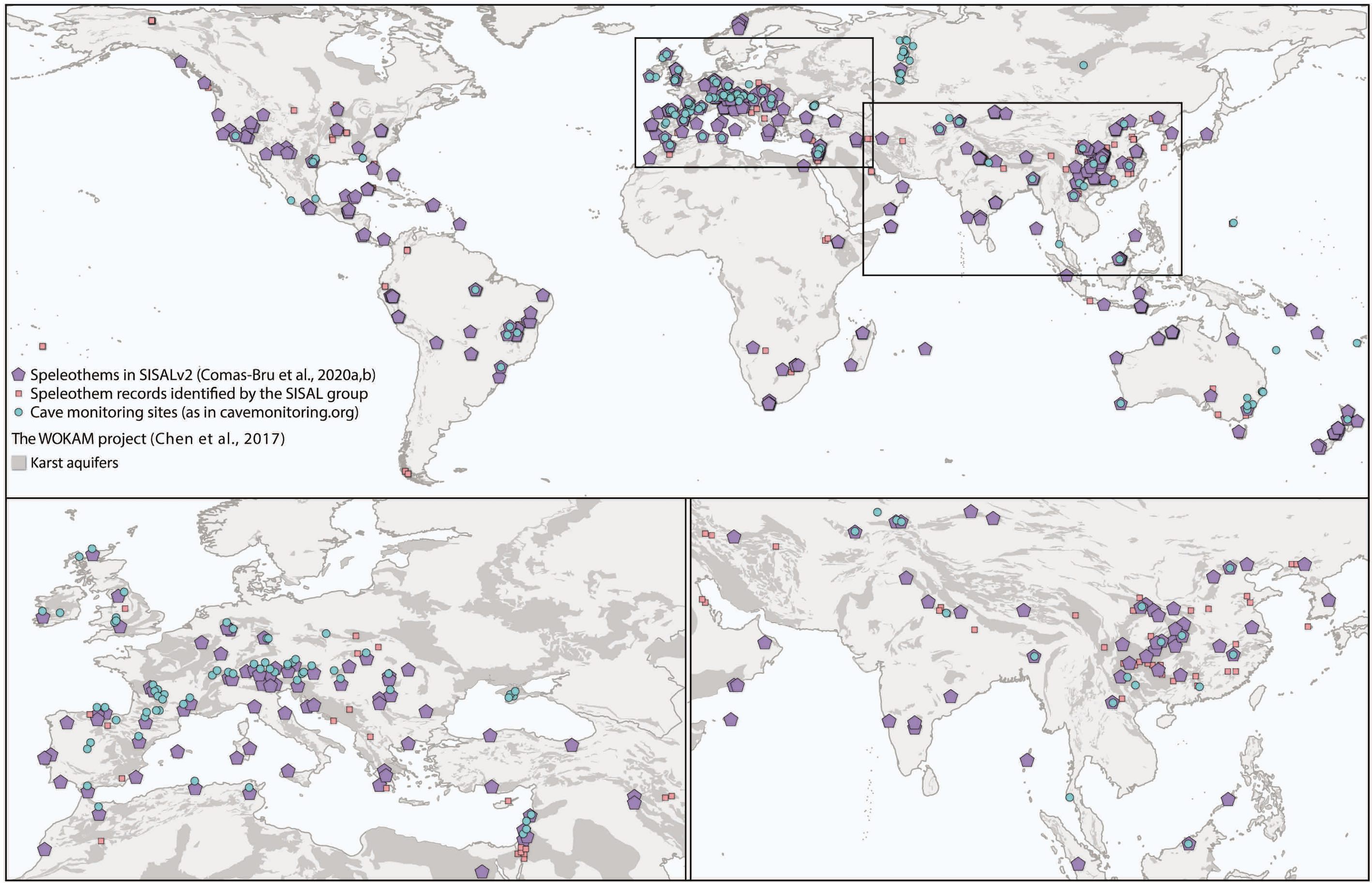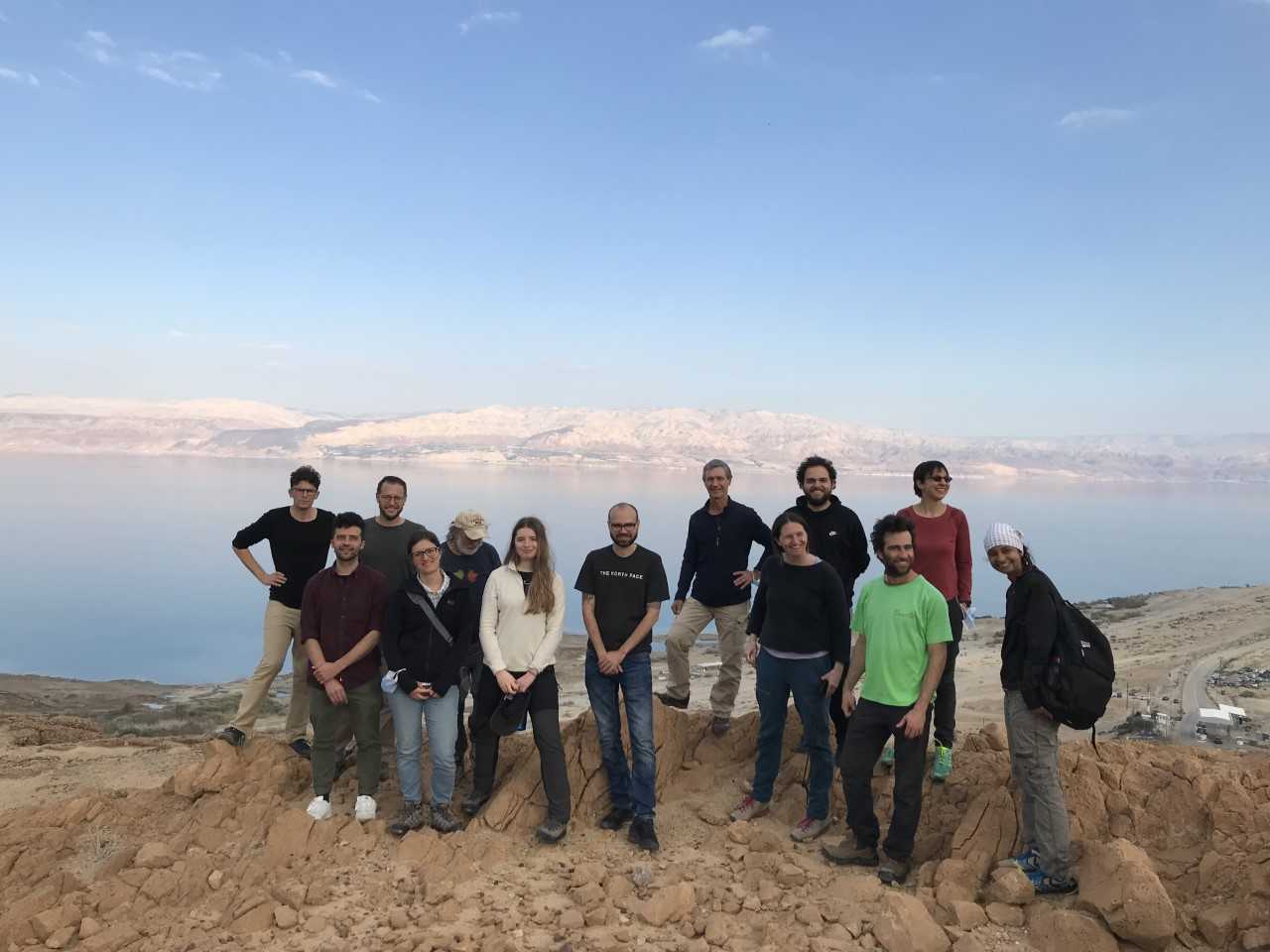- Home
- Science Introduction
- Wg
- Sisal
- SISAL
SISAL - Speleothem Isotopes Synthesis and AnaLysis

Phase 1 |
Phase 2 |
Phase 3 |
|
|
|
|
2016-2019 |
2020-2023 |
2024-2027 |

Waipuna Cave, New Zealand. Image credit: Sebastian Breitenbach.
Summary
The PAGES SISAL working group is in its 3rd phase.
It was previously active from 2017–2019 (phase 1) and 2020–2023 (phase 2).
The Speleothem Isotope Synthesis and AnaLysis Working Group brings together speleothem scientists, speleothem-process and climate modelers to develop global synthesis of speleothem isotope and other proxies to explore past climate changes and for model evaluation.
This group is open to anyone who is interested, and early-career researchers are encouraged to be involved:
- Sign up to the SISAL mailing list
- Follow the group on Twitter: https://twitter.com/SISAL_wg
- Contact a member of the Steering Group
Goals
Phase III:
In Phase III, we would like to use three approaches to enhance the power of data-model comparison techniques:
- Provide climate interpretations of speleothem data covering the Common Era in collaboration with the PAGES 2k Network’s Hydro2k project.
- Use the SISAL cave monitoring and speleothem databases to evaluate and update Proxy System Models (PSMs) in collaboration with the PAGES 2k Network and CVAS WGs.
- Use geostatistical techniques to provide isoscapes covering critical time slices and regions.
Phase II:
Phase II of the working group expanded on the database with additional proxy fields of trace element data to allow for improved regional climate interpretations and for data and non-isotope-enabled-model comparisons which are many more in number. Working closely with Andreas Hartmann’s karst group (University of Dresden), the SISAL working group (WG) also created a cave monitoring database structure and collected 78 cave site monitoring records.
Phase I:
Phase I of the working group created a global speleothem database and used it for providing regional climate interpretations, updated proxy interpretations, best practices for data and isotope-enabled-model comparisons particularly targeting the benchmark periods and the last 1000 years, and using these approaches for examining changes in the monsoon regions.
Phase III: Speleothem Isotope Synthesis and AnaLysis Phase III
Speleothems are important sources of palaeoclimate information because of their global distribution and exceptional age control.
Over the past seven years, the SISAL Working Group (WG) has built a global network of speleothem researchers and created multiple versions of a global database of speleothem stable isotope records (Atsawawaranunt et al., 2018; Comas-Bru et al., 2019, Comas-Bru et al., 2020). SISALv3 with new speleothem trace element proxies, updated stable isotope records and additional metadata fields is in the final revision stage at ESSD (Kaushal, Lechleitner et al., 2023). The SISAL database versions are already being used to explore regional patterns, investigate the drivers of past climate changes, for evaluation of isotope-enabled model simulations and improved climatic interpretations of proxies using multi-proxy approaches allowed by the additional proxy fields.
Data-model comparison techniques are a powerful way of understanding climate changes and processes. They rely on the strength of measured data afforded by paleo-proxy measurements, and climate process insights provided by climate models. Several techniques can be applied to ease the language barrier between measured paleo data in the chemical space, and the climate variable and parameter data provided by models. This will be the focus of SISAL Phase III.
Phases I and II:
In SISAL Phase I (2017-2019), the group built a global network of speleothem researchers and created a global database of speleothem oxygen and carbon isotopes. SISAL database version 2 has nearly 700 records, ~500 of which will additionally have standardized age models.
We used the SISAL database to review speleothem-based climate reconstructions regionally and provided a protocol for isotope-enabled model evaluation of speleothem data. However, many factors influence the isotopic composition of speleothems and robust interpretations remain a key gap. We plan to address this in SISAL Phase 2.
In SISAL Phase II (2020-2023), climatic interpretations will be improved using cave monitoring data and process-based modeling for the modern period and contiguous speleothem measurements, such as trace elements, and paleoclimate model simulations for periods beyond instrumental measurements.
Additionally, data assimilation techniques will be used to combine simulated and observed isotopic signals which can provide semi-quantitative climate reconstructions, allowing the SISAL database to be used for evaluation of climate models that do not explicitly simulate isotopes.
Cave monitoring sites available in the cave-monitoring.org database and speleothem records available in SISAL_v2 database (Comas-Bru et al. 2020a; 2020b) are plotted on a karst aquifer map of the world (Goldscheider et al. 2020). European and Asian sites have been expanded in the panels below. Click to enlarge.
The SISAL Database
The SISAL database is the key product created by SISAL Phase 1 in 2018 and includes 381 speleothem records from 174 cave sites. This has been increased to nearly 700 speleothem records from 293 cave sites in SISAL_v2, which will be released in early 2020.
SISAL_v2 additionally contains 500 records with 'SISAL chronologies' - a suite of seven different methods used to construct age models enabling more accurate data synthesis and comparisons.

WG background
SISAL Phase 1 was active from 2017 to 2019. SISAL was initiated by Laia Comas-Bru and Sandy Harrison to provide quality controlled dataset versions of the vast number of published speleothem records for climate reconstruction and model evaluation.
SISAL is now an active speleothem community with over 100 members from 20+ countries who engage through annual workshops and monthly telecons to develop database versions and use them to answer big-picture science questions.
SISAL is led by a Steering Group and regional coordinators, and project specific leaders are largely composed of early-career researchers.
Phase 1 products
- Publication of SISAL_v1 of the SISAL database (Atsawawaranunt et al. 2018) with 381 speleothem records from 174 cave sites and the associated database paper (Atsawawaranunt et al., 2018) in Earth System Science Data.
- Publication of a set of regional reviews of speleothem-based climate reconstructions in a Special Issue of Quaternary.
- Publication of a protocol to use SISAL for isotope-enabled model evaluation (Comas-Bru et al. 2019) accompanied by an updated version of the database (SISAL_v1b - Atsawawaranunt et al. 2019) in Climate of the Past.
- Publication of the second version of the SISAL database (SISAL_v2 - Comas-Bru et al. 2020) with 691 speleothem records from 293 cave sites. An important addition to SISAL_v2 is the construction of the "SISAL chronology": a suite of age models for ~500 speleothem records using 7 different approaches.
- See full list of products here.
Learn more and participate
Subscribe to the SISAL mailing list here.
This group is open to anyone who is interested, and early-career researchers are encouraged to be involved.
To participate contact a member of the Steering Group.
Follow the working group on Twitter.
Coordinators
Steering Committee Phase III
Nikita Kaushal (AMNH, USA) - 2k Network liaison
Sandy Harrison (University of Reading, United Kingdom) - PMIP liaison
Istvan Gábor Hatvani (HUN-REN RCAES, Hungary)
Kira Rehfeld (University of Tubingen, Germany) - PMIP, CVAS liaison
ECR Khalil Azennoud (MPU, Morocco)
ECR Laura Endres (ETH, Switzerland)
Jun Hu (XU, China)
PAGES SSC liaison
Liping Zhou (Peking University, China)
